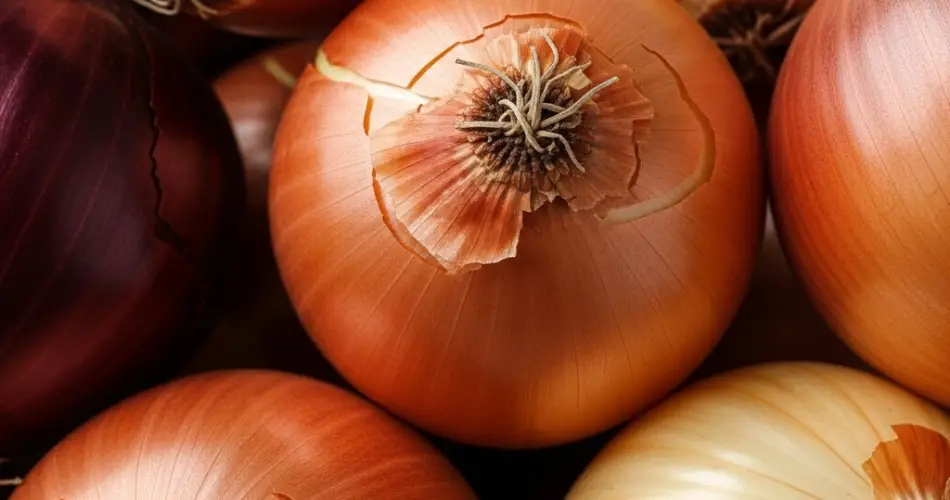Growing onions that are both juicy and crisp depends on more than just sunlight and water. To produce firm bulbs with good size and flavor, onions need a steady supply of the right nutrients at the right times. Fertilizer plays a crucial role in this, and knowing what to feed your onions—and when—can make the difference between spindly growth and a bountiful harvest.
Let’s break down the essential nutrients onions need, the best fertilizers to use, and how to apply them to grow perfect bulbs every time.
Understanding Onion Nutrient Needs
Onions are heavy feeders, especially during the early stages of growth when they are building strong roots and green tops. The leaves act as energy factories, so the more healthy foliage your plant has, the larger the bulb it can produce later on.
Onions mainly need three macronutrients:
-
Nitrogen (N): Promotes leaf growth early in the growing season.
-
Phosphorus (P): Supports strong root development.
-
Potassium (K): Encourages overall plant strength, disease resistance, and helps bulbs firm up during maturing.
Micronutrients like sulfur, calcium, and magnesium are also helpful, but focusing on the main NPK trio will give you the best results.
1. Start with a Nutrient-Rich Base
Before planting onion sets or seedlings, prepare the soil with a balanced, organic compost or well-aged manure. This not only improves soil structure and moisture retention but also gives onions a gentle initial dose of nutrients.
-
Mix in composted chicken manure, worm castings, or well-rotted cow manure a few weeks before planting.
-
Aim for loose, well-draining soil with a pH between 6.0 and 6.8 for optimal nutrient uptake.
Avoid fresh manure, as it can be too rich and burn young onion roots.
2. Focus on Nitrogen Early On
During the first 4–6 weeks after planting, onions need a boost in nitrogen to promote leaf growth. Each leaf corresponds to a ring in the bulb, so more leaves usually mean bigger onions.
Best nitrogen-rich fertilizers:
-
Blood meal – A quick-acting organic source high in nitrogen
-
Fish emulsion – A balanced liquid fertilizer rich in nitrogen and trace minerals
-
Alfalfa meal or pellets – Provide a slow-release nitrogen source over time
Apply nitrogen fertilizers every two weeks during early growth. For granular fertilizers, sprinkle them in a band 2–3 inches away from the base of the plant and water thoroughly.
3. Switch to Balanced Feeding as Bulbs Begin to Form
Once your onion plants start to bulb—usually when daylight increases and leaf production slows—reduce nitrogen and switch to a more balanced or phosphorus-and-potassium-rich fertilizer. This shift encourages the plant to stop making new leaves and focus energy on swelling the bulb.
Good options at this stage include:
-
Bone meal – High in phosphorus, promoting root and bulb development
-
Kelp meal – Rich in potassium and micronutrients, improving flavor and shelf life
-
Wood ash (in small amounts) – Adds potassium but be cautious with pH
Look for organic fertilizers labeled 5-10-10 or 3-4-6 (N-P-K ratio) during bulb formation. Apply every 3–4 weeks until the tops begin to yellow naturally.
4. Avoid Over-Fertilizing
While onions need regular feeding, too much fertilizer—especially nitrogen late in the season—can do more harm than good. Excess nitrogen delays bulb development and may lead to soft, watery onions that don’t store well.
Signs of over-fertilization include:
-
Excessively lush, dark green tops with small bulbs
-
Tip burn or yellowing of the leaves
-
Soft, splitting bulbs at harvest
Always follow dosage instructions, and water thoroughly after fertilizing to distribute nutrients evenly.
5. Consider Liquid Feeding for Fast Results
If your onion plants appear to need a quick boost—especially during a growth slump—use a diluted liquid fertilizer. Fish emulsion, seaweed extract, or compost tea can provide an immediate shot of nutrition that’s easy for plants to absorb.
Mix according to the label and apply directly to the soil every 10–14 days as a supplement, not a replacement for your main fertilizer schedule.
6. Don’t Forget Mulching
Although not a fertilizer, mulch helps maintain even soil moisture and temperature, which indirectly supports better nutrient uptake. Use straw, shredded leaves, or grass clippings around the base of your onions. As the mulch breaks down, it contributes organic matter back into the soil.
Final Thoughts
To grow juicy, crisp onions, timing and balance are everything. Start with nutrient-rich soil, feed regularly with nitrogen during early growth, and switch to phosphorus and potassium as bulbs form. Avoid overfeeding, especially with nitrogen late in the season, and use organic fertilizers that nourish both the plant and the soil.
With the right approach to fertilization, you can enjoy a harvest of flavorful, firm onions that store well and taste great in your kitchen for months to come.



